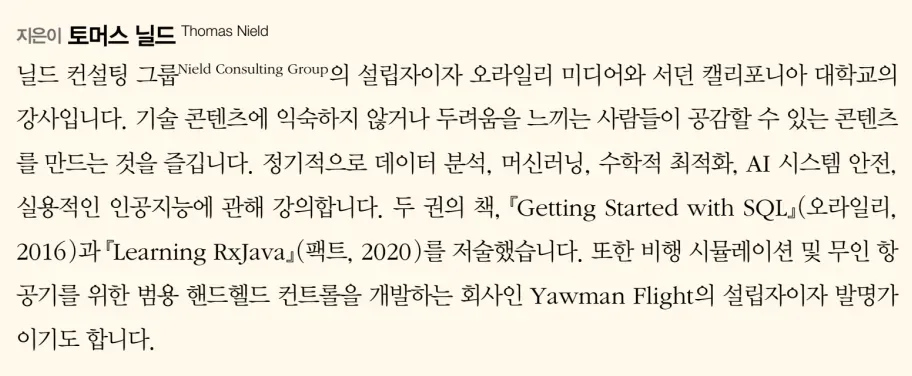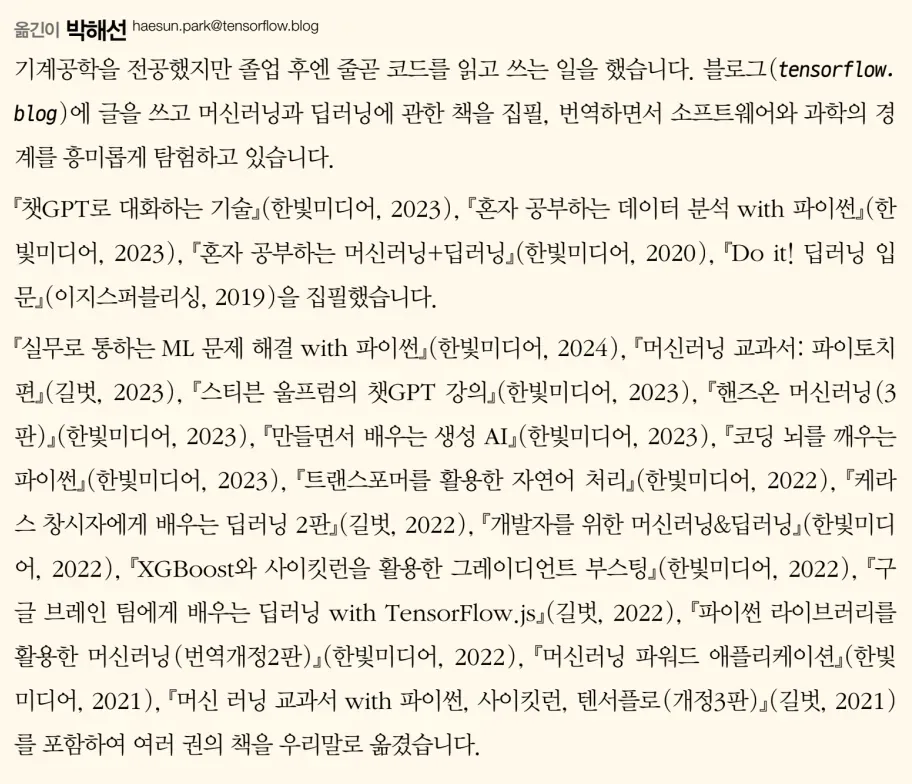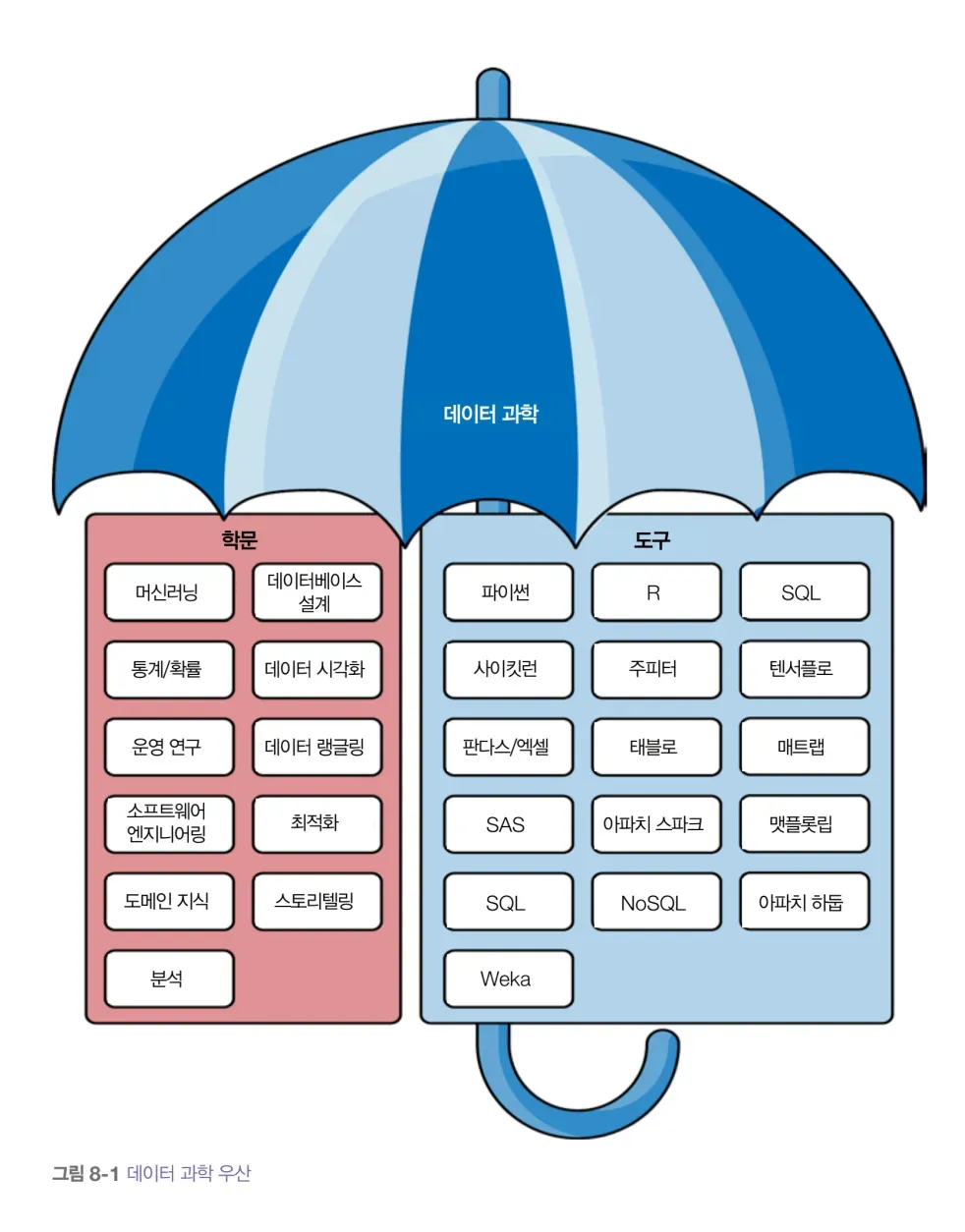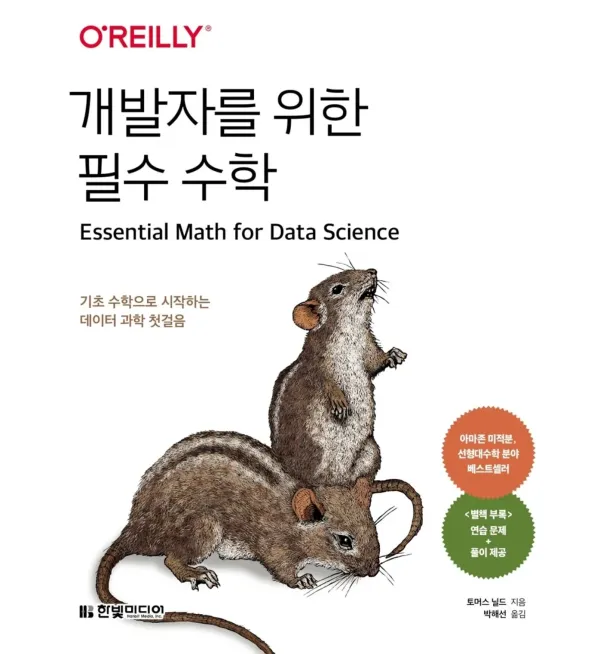What is Math to Developers?
Development and mathematics have an inseparable relationship. In some fields, you rarely use math, but eventually, there comes a moment when math is needed. For example, when I first learned development, I was very interested in game development and studied it. Later, I needed math for object animation representation in frontend, 3D studies, and understanding and using various algorithms.
Since I don't dig deep, I've been building shallow knowledge each time I study what I need.
Recently, with AI becoming a hot topic, I thought I needed to study math again to understand machine learning and easily comprehend related papers. Especially probability.
Fortunately, I got to see this book with support from Hanbit Soft.
Author and Translator Profiles
Author Thomas Nield and translator Park Haeseon have already written and translated many books related to data fields and machine learning.


Essential Math for Developers
The Korean title is "Essential Math for Developers", but the original title is "Essential Math for Data Science".
Essential Math for Data Science
That's right! Actually, this book is for data scientists among the broad fields of mathematics. It's math for data scientists rather than math for game developers, animation, or algorithms. The last chapter even covers concerns about data scientist career paths.
Since it was published in May 2022, OpenAI's ChatGPT is mentioned, but it wasn't covered in detail since it wasn't as hot a topic as it is now.
Wide Range of Math Topics Needed for Machine Learning
 It applies to actual applications like linear regression, logistic regression, and neural networks, and finally discusses data science career paths and the future.
It applies to actual applications like linear regression, logistic regression, and neural networks, and finally discusses data science career paths and the future.
It's useful for those interested in data science or who have experience working in data analysis and want to concretize their knowledge, those with software engineering backgrounds who want to understand artificial intelligence and machine learning, project managers who want to set appropriate scope or know their team's capabilities, and those curious about how mathematics is used practically rather than academically.
This book says you can play various roles like analyst, researcher, machine learning consultant, etc., even without becoming a data scientist.
While the author doesn't encourage Jupyter notebooks, the translator provides them.
Due to anchoring bias that can bias you toward what you first learn, many programmers end up using only the first language they learn. To overcome this, you can study math while learning Python. Related to this, there's Polyglot Programming that I reviewed before.
It also shares brief information about data visualization.
AI Winter
After ChatGPT's release, it became a hot topic again, but there were times when artificial intelligence was in the spotlight before. When this interest decreased and investment reduced, AI winters came. Will an AI winter come this time too?
In Chapter 8, author Thomas Nield shares insights based on working at Fortune 500 companies for over 10 years. The author advises that especially when countless things are pouring out, understanding and thinking about fundamental things are necessary.
Practice Problems and Solutions
Practice problems and solutions are also provided. The difficulty level allows you to solve them after reading the book content, and they help with review.
Importance of Roles
If an AI-using service is like Netflix, users would feel inconvenience, but in aviation or autonomous driving, AI problems could cause loss of life. Therefore, you can't try various experiments.
Also, it says to focus on roles. If there's leadership with a clear vision, you can guess what to do, but if you're hired simply to gain an advantage in data-driven or data science, you might have the burden of finding problems to solve yourself.
Conclusion
As a software engineer, I was able to gain much information about the data scientist field that I didn't know. Also, since this book came out before LLMs like ChatGPT became famous, it contained more fundamental machine learning math and insights from the data science field.
It's good for data scientists, but I can also recommend it to developers interested in this field. Initially, I wondered if I should read it since I'm not a data scientist based on the original title, but rather because of that, I was able to gain much knowledge I didn't know.
"This review was written after receiving the book for Hanbit Media's <I am a Reviewer> activity."